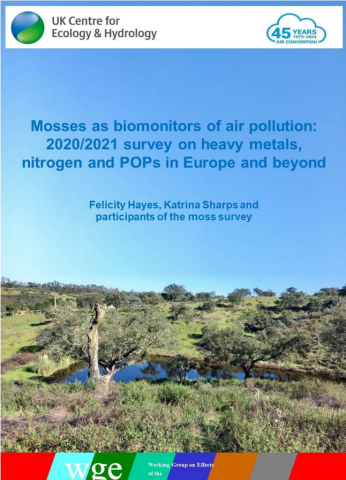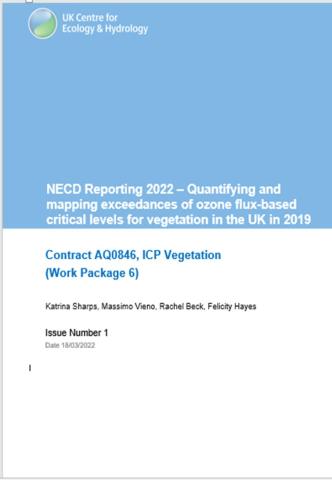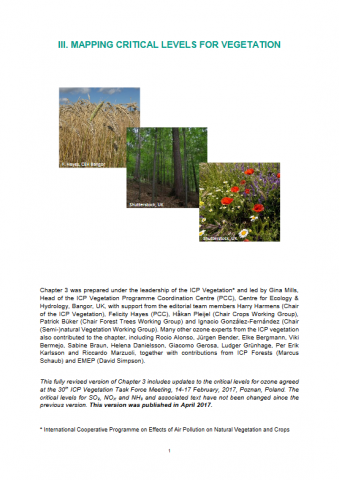Aims
- To identify areas at risk of adverse impacts of air pollution on vegetation (including crops) from the local to global scale;
- To collate and review evidence of air pollution impacts on vegetation from monitoring activities, experiments, surveys and the literature, including impacts in a changing climate, and assess spatial patterns and temporal trends;
- To further develop and apply flux-based ozone critical levels for vegetation, map areas at risk of ozone impacts on vegetation and exceedances of critical levels in the current and future climate;
- To provide field-based evidence of spatial patterns and temporal trends of the deposition of heavy metals, nitrogen and persistent organic pollutants to vegetation, using naturally growing mosses as biomonitors;
- To support Parties of the LRTAP Convention with the further development and implementation of methodologies developed by the ICP Vegetation.
- To stimulate outreach activities beyond the ECE region and train new partners, particularly in least developed countries, low and lower middle income countries, to apply methodologies developed by the ICP Vegetation.


